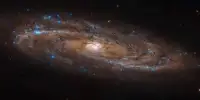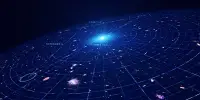A time-lapse film of four planets larger than Jupiter as they orbit their star was created by Northwestern University astrophysicist Jason Wang after more than ten years of observations, offering viewers a unique look into planetary motion.
Wang, an assistant professor of physics and astronomy at Weinberg College of Arts and Sciences, noted that this film of planetary motion is especially stunning because it can be challenging to spot planets in a revolving orbit.
Since we are in the same system and don’t have a top-down view, objects in our solar system like Jupiter and Mars are hardly discernible, according to Wang. It is challenging to record videos of this quality of planetary motion because planetary events happen either too quickly or too slowly.
However, this animation shows these motions on a time scale that people can understand, showing nearly 12 years of planetary motion. It’s unlike anything we’ve ever seen and demonstrates how much more we still need to understand about the universe.
The system HR8799, which is seen in the movie showing the velocity of the planets, is situated 133.3 light-years away from Earth in the Pegasus constellation. About 30 million years old, this star is 1.5 times as massive and 5 times as luminous as the sun. It became the first star system whose planets were clearly visible in photographs in 2008.
Following that, Wang started to observe the system and eventually collected over 12 years’ worth of data, which he then put into this time-lapse film illustrating the planetary movements inside the system. And it’s not the first time that time-lapses with incredible worth have appeared.
Using half a million photos, astronomers last year produced a time-lapse of Jupiter’s spin. We’ve also witnessed sunspot time-lapses, which astronomers have used to examine and comprehend the behavior of our own star.
















